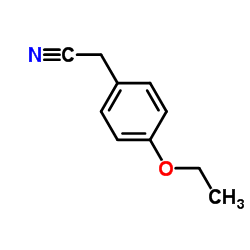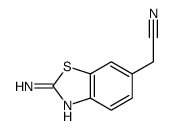3544-25-0
| Name | 2-(4-aminophenyl)acetonitrile |
|---|---|
| Synonyms |
(4-Aminophenyl)acetonitrile
4-aminophenylacetic acid nitrile p-Aminobenzyl cyanide p-aminophenyl-acetonitrile 4-aminophenylacetonitrile p-cyanomethylphenyl amine 4-aminobenzyl 4-aminobenzeneacetonitrile (p-Aminophenyl)acetonitrile 2-(4-Aminophenyl)acetonitrile MFCD00007912 4-Aminobenzyl cyanide EINECS 222-587-4 p-amino benzyl cyanide Benzeneacetonitrile, 4-amino- |
| Density | 1.1±0.1 g/cm3 |
|---|---|
| Boiling Point | 312.0±0.0 °C at 760 mmHg |
| Melting Point | 45-48 °C(lit.) |
| Molecular Formula | C8H8N2 |
| Molecular Weight | 132.163 |
| Flash Point | 136.3±20.9 °C |
| Exact Mass | 132.068741 |
| PSA | 49.81000 |
| LogP | 0.17 |
| Vapour Pressure | 0.0±0.6 mmHg at 25°C |
| Index of Refraction | 1.593 |
| Water Solubility | SLIGHTLY SOLUBLE |
Synonym:4-Aminophenylacetonitrile; 4-Aminobenzyl cyanide Section 2 - COMPOSITION, INFORMATION ON INGREDIENTS
Risk Phrases: 20/21/22 Section 3 - HAZARDS IDENTIFICATION EMERGENCY OVERVIEW
Harmful by inhalation, in contact with skin and if swallowed. Potential Health Effects Eye: May cause eye irritation. Skin: May cause skin irritation. May be harmful if absorbed through the skin. Ingestion: May cause gastrointestinal irritation with nausea, vomiting and diarrhea. May be harmful if swallowed. Inhalation: May cause respiratory tract irritation. May be harmful if inhaled. Chronic: May be metabolized to cyanide which in turn acts by inhibiting cytochrome oxidase impairing cellular respiration. Chronic exposure to cyanide solutions may lead to the development of a "cyanide" rash, characterized by itching, and by macular, papular, and vesicular eruptions, and may be accompanied by secondary infections. Exposure to small amounts of cyanide compounds over long periods of time is reported to cause loss of appetite, headache, weakness, nausea, dizziness, and symptoms of irritation of the upper respiratory tract and eyes. Section 4 - FIRST AID MEASURES Eyes: In case of contact, immediately flush eyes with plenty of water for at least 15 minutes. Get medical aid. Skin: In case of contact, immediately flush skin with plenty of water for at least 15 minutes while removing contaminated clothing and shoes. Get medical aid immediately. Wash clothing before reuse. Ingestion: If swallowed, do not induce vomiting unless directed to do so by medical personnel. Never give anything by mouth to an unconscious person. Get medical aid. Inhalation: If inhaled, remove to fresh air. If not breathing, give artificial respiration. If breathing is difficult, give oxygen. Get medical aid. Notes to Physician: Section 5 - FIRE FIGHTING MEASURES General Information: As in any fire, wear a self-contained breathing apparatus in pressure-demand, MSHA/NIOSH (approved or equivalent), and full protective gear. Combustion generates toxic fumes. This material in sufficient quantity and reduced particle size is capable of creating a dust explosion. Extinguishing Media: Use water spray, dry chemical, carbon dioxide, or chemical foam. Section 6 - ACCIDENTAL RELEASE MEASURES General Information: Use proper personal protective equipment as indicated in Section 8. Spills/Leaks: Vacuum or sweep up material and place into a suitable disposal container. Clean up spills immediately, observing precautions in the Protective Equipment section. Provide ventilation. Section 7 - HANDLING and STORAGE Handling: Wash thoroughly after handling. Wash hands before eating. Remove contaminated clothing and wash before reuse. Minimize dust generation and accumulation. Avoid contact with eyes, skin, and clothing. Use only with adequate ventilation. Avoid breathing dust. Storage: Store in a tightly closed container. Store in a cool, dry, well-ventilated area away from incompatible substances. Section 8 - EXPOSURE CONTROLS, PERSONAL PROTECTION Engineering Controls: Facilities storing or utilizing this material should be equipped with an eyewash facility and a safety shower. Use adequate ventilation to keep airborne concentrations low. Exposure Limits CAS# 3544-25-0: United States OSHA: 5 mg/m3 TWA (listed under Cyanide anion). Germany: (listed as cyanide anion): Skin absorber Netherlands: (listed as cyanide anion): 5 mg/m3 MAC (as CN) Personal Protective Equipment Eyes: Wear appropriate protective eyeglasses or chemical safety goggles as described by OSHA's eye and face protection regulations in 29 CFR 1910.133 or European Standard EN166. Skin: Wear appropriate protective gloves to prevent skin exposure. Clothing: Wear appropriate protective clothing to prevent skin exposure. Respirators: Follow the OSHA respirator regulations found in 29 CFR 1910.134 or European Standard EN 149. Use a NIOSH/MSHA or European Standard EN 149 approved respirator if exposure limits are exceeded or if irritation or other symptoms are experienced. Section 9 - PHYSICAL AND CHEMICAL PROPERTIES Physical State: Crystalline powder Color: yellow to brown Odor: Not available. pH: Not available. Vapor Pressure: Not available. Viscosity: Not available. Boiling Point: 312 deg C @ 760 mm Hg Freezing/Melting Point: 44-48 deg C Autoignition Temperature: Not available. Flash Point: > 110 deg C (> 230.00 deg F) Explosion Limits, lower: Not available. Explosion Limits, upper: Not available. Decomposition Temperature: Solubility in water: slightly soluble Specific Gravity/Density: Molecular Formula: C8H8N2 Molecular Weight: 132.16 Section 10 - STABILITY AND REACTIVITY Chemical Stability: Stable under normal temperatures and pressures. Conditions to Avoid: Dust generation. Incompatibilities with Other Materials: Strong oxidizing agents, strong reducing agents, strong acids, and strong bases. Hazardous Decomposition Products: Nitrogen oxides, carbon monoxide, carbon dioxide, cyanides. Hazardous Polymerization: Has not been reported. Section 11 - TOXICOLOGICAL INFORMATION RTECS#: CAS# 3544-25-0 unlisted. LD50/LC50: Not available. Carcinogenicity: 4-Aminobenzyl cyanide - Not listed by ACGIH, IARC, or NTP. Section 12 - ECOLOGICAL INFORMATION Ecotoxicity: Bacteria: Phytobacterium phosphoreum: EC50 = 0.36-0.40 mg/L; 5,15,30 minutes; Microtox test; 15 degrees C Section 13 - DISPOSAL CONSIDERATIONS Dispose of in a manner consistent with federal, state, and local regulations. Section 14 - TRANSPORT INFORMATION IATA Shipping Name: NITRILES, SOLID, TOXIC, N.O.S.* Hazard Class: 6.1 UN Number: 3276 Packing Group: III IMO Shipping Name: Nitriles, Toxic, N.O.S. Hazard Class: 6.1 UN Number: 3276 Packing Group: III RID/ADR Shipping Name: Nitriles, Toxic, N.O.S. Hazard Class: 6.1 UN Number: 3276 Packing group: III Section 15 - REGULATORY INFORMATION European/International Regulations European Labeling in Accordance with EC Directives Hazard Symbols: XN Risk Phrases: R 20/21/22 Harmful by inhalation, in contact with skin and if swallowed. Safety Phrases: S 36/37 Wear suitable protective clothing and gloves. WGK (Water Danger/Protection) CAS# 3544-25-0: No information available. Canada None of the chemicals in this product are listed on the DSL/NDSL list. CAS# 3544-25-0 is not listed on Canada's Ingredient Disclosure List. US FEDERAL TSCA CAS# 3544-25-0 is not listed on the TSCA inventory. It is for research and development use only. SECTION 16 - ADDITIONAL INFORMATION N/A |
| Symbol |

GHS07 |
|---|---|
| Signal Word | Warning |
| Hazard Statements | H302-H312-H332 |
| Precautionary Statements | P280 |
| Personal Protective Equipment | dust mask type N95 (US);Eyeshields;Gloves |
| Hazard Codes | Xn:Harmful; |
| Risk Phrases | R20/21/22 |
| Safety Phrases | S36-S36/37 |
| RIDADR | 3276 |
| WGK Germany | 3 |
| Packaging Group | III |
| Hazard Class | 6.1 |
| HS Code | 2926909090 |
| Precursor 6 | |
|---|---|
| DownStream 10 | |
| HS Code | 2926909090 |
|---|---|
| Summary | HS:2926909090 other nitrile-function compounds VAT:17.0% Tax rebate rate:9.0% Supervision conditions:none MFN tariff:6.5% General tariff:30.0% |



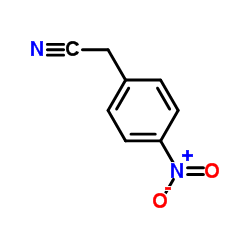

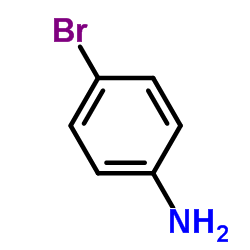


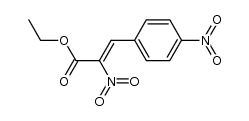


![N-[4-(2,4,7-triaminopteridin-6-yl)phenyl]methanesulfonamide structure](https://image.chemsrc.com/caspic/433/142731-14-4.png)
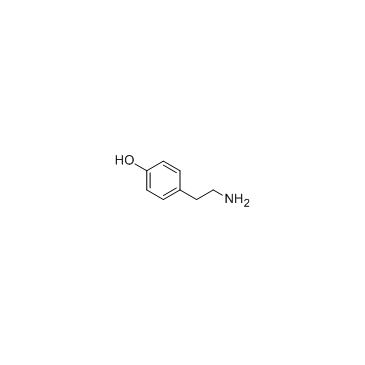
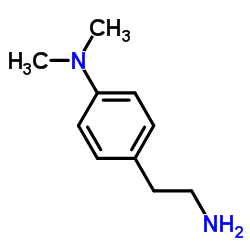
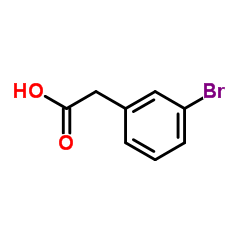
![N-[4-(Cyanomethyl)phenyl]acetamide structure](https://image.chemsrc.com/caspic/321/25025-06-3.png)
